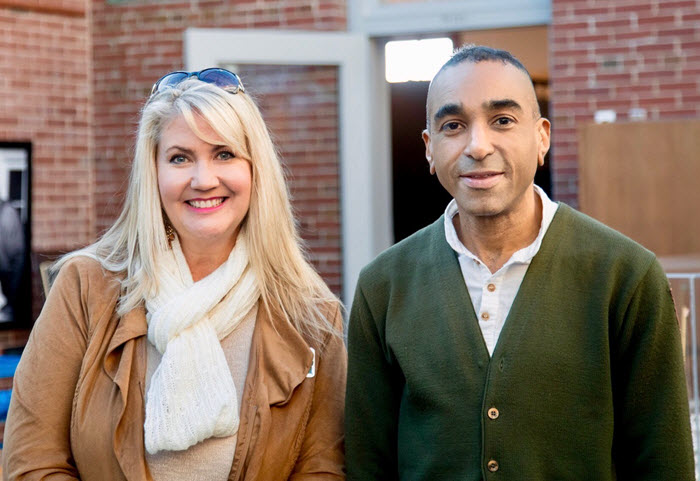New Online! English Genealogy Records and More
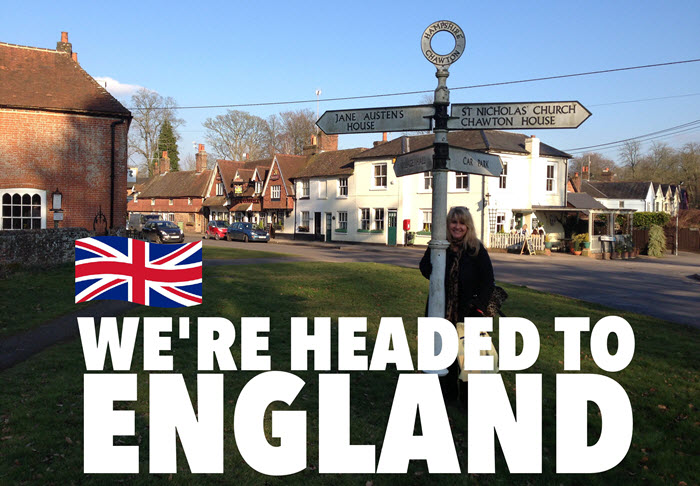
English Genealogy Records Now Online
Ancestry.com subscribers can now search these English genealogy record collections:
-
-
-
-
- Bedfordshire Petty Sessions 1854-1915 This collection includes details of over 100,000 individuals involved in petty session hearings in Befordshire. Details for each individual may include name, role in the case, date of the hearing, location of the court, and even the fines or punishments given to the defendant(s).
- Bedfordshire Valuation Records 1838-1929 These records deal solely with the value of properties in Bedfordshire county. The volumes name the proprietor or tenant, describe or name the property and give an annual rental value. It will also sometimes give an acreage for the property.
- Bedfordshire Land Tax Records 1797-1832 Details found within this collection include may include year of residence, name of occupier, name of owner, and parish of residence.
- Shropshire Extracted Church of England Parish Records, 1538-1812. This collection of indexes is taken from various published versions of parish and probate records from Shropshire, England dating from the early 1500s (with some non-parish records earlier) to the late 1800s. “The records include baptisms/christenings, burials, marriages, tombstone inscriptions, obituaries, tax lists, wills, and other miscellaneous types of records,” states the collection description. “Also included are some records from non-conformist churches.”
-
-
-
At FamilySearch.org, you can now search a free collection of Staffordshire Church Records. In partnership with Findmypast’s expansion of Staffordshire records, this collection provides church records from 1538-1944. Nearly 5 million indexed records and over 278,000 images are included.
-
-
-
-
- Buckinghamshire Baptism Index 870,000 transcripts created from original records held at the Buckinghamshire Archives. You will also discover your ancestor’s birthplace, the date of the baptism, their father’s occupation and residence.
- Buckinghamshire Banns Index Explore 101,000 records created from original parish registers and bishop’s transcripts. “Each transcript will reveal the name of your ancestor’s intended spouse, the couple’s residence, the dates the announcements were read and their intended date of marriage.”
- Buckinghamshire Marriage Index Over 485,000 transcripts “will reveal the couple’s birth years, marital status, occupation, date of marriage, place of marriage, residence, occupation, father’s names, father’s occupations and the names of any witnesses.”
- Buckinghamshire Burial Index More than 662,000 transcripts are included, created from original parish registers and bishop’s transcripts. “Each record will reveal your ancestor’s birth year, age at death, burial date, and residence. An archive reference is also included, allowing you to locate a copy of the original document.”
-
-
-
 British and Irish Newspapers Now Online
British and Irish Newspapers Now Online
Over 2.3 million new articles and 7 brand new titles have been added to the British Newspaper Archive’s collection of historic newspapers this month. New titles now available to search include:
- Tenby Observer
- Brechin Herald
- Milngavie and Bearsden Herald
- Alcester Chronicle
- Abergavenny Chronicle
- Ripley and Heanor News and Ilkeston Division Free Press
- Eastern Daily Press and the Colchester Gazette
Click here to explore these and other historic British Newspapers.
More than 5,000 pages from the Leitrim Advertiser have been added to Irish newspapers at the British Newspaper Archive. From the description: “The paper was originally published in Mohill, Leitrim and known in later years and The Leitrim and Longford Advertiser.” The earliest issue dates back to 1886, through 1916. With this addition, the British Newspaper Archive now has a newspaper for every county in Ireland!
German Births and Deaths: Bischofswerda
Ancestry.com has added new collections for Bischofswerda births (1876-1902) and deaths (1876-1951). Bischofswerda is located about 22 miles east of Dresden at the edge of Upper Lusatia in the German state of Saxony. To local residents, it is also known as “Schiebock” and known for its large historic market square and town hall.
Italian civil registration: Padova
Swedish Household Examination Books
Chinese Records at the Library of Congress
An exciting announcement from the Library of Congress this week! “The contents of the Asian Division’s Pre-1958 Chinese Collection, totaling more than 42,000 items, are now fully searchable through the Library’s online catalog in both Chinese characters and Romanized script. This rich and diverse collection has served researchers and general audiences for nearly 90 years; until now, however, bibliographic records for these materials were only available through a card catalog.”
United States
New York. The Vassar College Digital Newspaper Archive is now available online. Provided by the Vassar College Libraries, this archive provides access to newspapers published by Vassar College students. Earliest issues date back to 1872, and cover a wide range of topics and events on and off campus. This collection currently contains over 85,000 pages.
Ohio. New at Ancestry this week are Ohio Soldier Grave Registrations, 1804-1958. This database contains grave registration cards for soldiers from Ohio who served in the armed forces, mainly from the time of the War of 1812 up through the 1950s. Records may contain an individual’s name, date and place of birth, date and cause of death, location of burial, next of kin, military service information, and more.
Did you know? You can search the Genealogy Gems website for articles about your favorite genealogy categories–including records and research tips for several countries and ethnicities. Go to our home page and click on the dropdown menu under What do you want to learn about? Scroll down to see the various categories or start typing a few letters to jump down to that part of the alphabetical list.
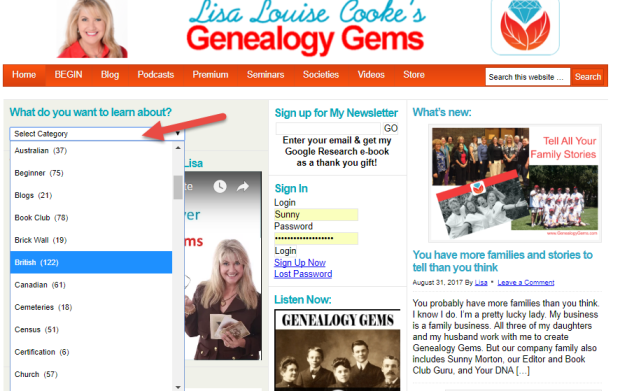
Disclosure: This post contains affiliate links and Genealogy Gems will be compensated if you make a purchase after clicking on these links. Thank you for supporting Genealogy Gems!
How to Find and Use Land Records for Genealogy
Land records are some of the most underutilized, yet most useful, records available in genealogy. Often, they are the only records which state a direct relationship between family members. They can also be used to prove relationships indirectly by studying the land laws in force at the time. Sometimes they can even be used to locate an ancestor’s farm or original house, so that we can walk today where our family walked long ago.
Land records exist in the United States in abundance for most locations. Read on to learn how to find land records and how they can help you scale seemingly impossible brick walls in your genealogy research. Our guest blogger is Jaye Drummond, a researcher for Legacy Tree Genealogists.
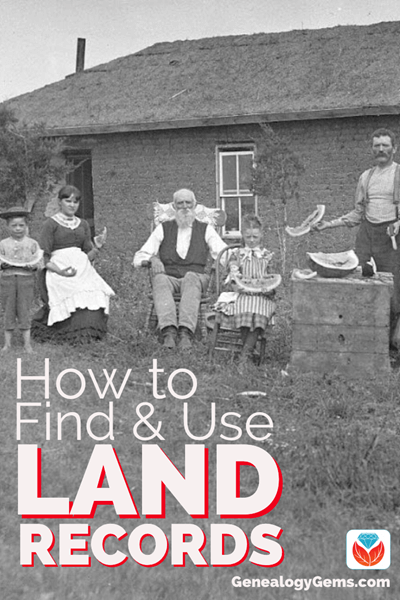
The History of Land Records
The search for new land is one of the main themes of American history, so it makes sense that land records would be an important part of researching that history.
The right to own real estate was not universal in most of the countries from which the majority of American immigrants came. And even when it was possible to own land legally, it was often too expensive and thus out of reach for most people.
As a result, the lure of vast expanses of relatively cheap and plentiful land has proved irresistible to millions of immigrants to American shores over the course of the past 400 years.
The land records created throughout those years to document ownership of all that real estate have accumulated in seemingly limitless amounts. Even in the face of catastrophic record loss in some locations, land records are generally plentiful. They usually exist from the date of formation of colonial, state, and county governments, where the records still exist.
Information Contained in Land Records
Due to the paramount importance of land ownership in what would become the United States, land records often are the only records in which you will find your ancestors mentioned in some areas.
And there’s good news! Land records often state relationships or provide other, indirect, evidence of family relationships. This makes them an invaluable resource for genealogists.
Understanding what kinds of land records exist, where to find them, and how to use them is often critical to solving genealogical mysteries.
4 Types of Land Records and How to Use Them
There are four different types of land records that can play a vital role in your family history research. Let’s take a closer look at what they are and how to use them.
1. Land Deeds
The most essential land record is the deed. Deeds document the transfer or sale of title, or ownership, of a piece of land or other property from one party to another.
Deeds usually concern land, or “real” property, but they also often mention moveable or “chattel” property, such as household goods and even enslaved persons.
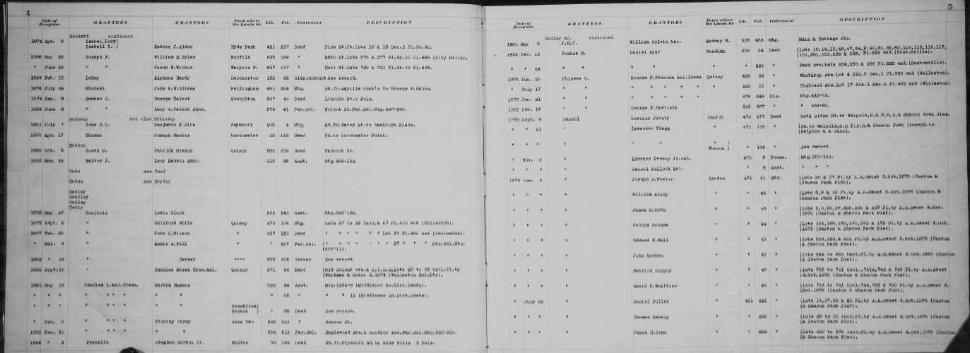
Example of deed index, courtesy of FamilySearch
They sometimes, but not always, contain explicit, direct statements of relationship between family members. Sometimes this can be a parent-child relationship, but deeds can also include a list of people who are children or heirs of a particular deceased person who owned the land being sold.
Sometimes the language in deeds involving heirs makes it clear that the heirs are children, sometimes not, so some care must be taken not to assume that all heirs are children. Research in other records sets such as probate, census, and church records may make the relationships of the heirs to the deceased land owner clearer.
In the early years of a settlement, and sometimes later, deeds books also often contained other types of transactions, including the sale of enslaved persons and sometimes even wills. These are often records for which no other copies survive. Thus, surviving deed books should always be checked for ancestors and their family members in every jurisdiction in which you do genealogy research.
Also, remember to check published abstracts of deeds if they exist, as witnesses to deeds were not included in most indexes to the original deed books. Witnessing a deed was one of many ways relatives assisted one another, and thus the presence of one of your ancestors as a witness for someone else suggests they had some kind of relationship, which might lead to the discovery of previously unknown ancestors.
Also keep in mind that not all states required the recording of deeds throughout their history, or did not require them to be recorded in a timely fashion.
Pennsylvania is an example of this lackadaisical attitude to record keeping that now seems foreign. When researching land records in Pennsylvania it is important to remember that deeds for an ancestor might have been recorded years, even decades, after the actual transaction took place. Therefore, always remember to check the indexes for deeds and other transactions many years after the person in question died or left the area.
In other states, such as New Jersey, land was sold at the colony and state level for longer than is typical in other areas and thus land records must be sought at the state or colony level up to that time.
In the case of New Jersey, deeds only began to be recorded in the various counties around 1785. Therefore, New Jersey real property research must be done at both the county and state or colonial level.
In the case of colonies and states with massive record loss, such as Virginia, land records recorded on the state level are often the only records that survive for some counties, and thus are critical for success in navigating such “burned” counties.
2. Land Grants and Patents
Land grants and patents issued by the various colonial, state and federal governments are also an important resource, including land lotteries in states like Georgia.
In many states, such as Pennsylvania and North Carolina, the original applications, warrants, surveys, and patents or grants still exist and can be searched at the state archives or online.
While these documents do not often state relationships, they sometimes do. That was the case with one of my ancestors whose father had applied for a land patent in Pennsylvania in 1787. He died before the patent was issued in 1800, and thus it was granted to his son by the same name. However, the land patent spelled out that the original applicant had died and his son was the person actually receiving the patent.
Land patents and grants, as well as deeds in general, can also document the dates in which an ancestor resided or at least owned land in a given location. This can assist the researcher in establishing timelines for ancestors. It can also help when it comes to differentiating between two or more individuals residing in a given area with the same name. Anyone dreading research on their Smith and Jones ancestors might just find the solution they seek in those old, musty deed books!
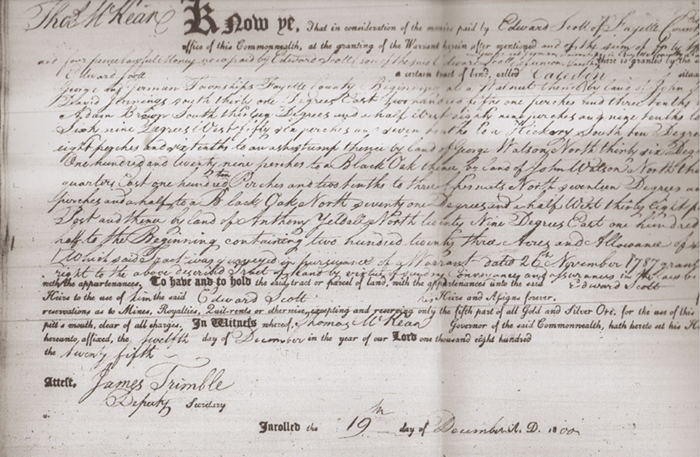
3. Mortgages
Other land records that might prove essential in solving genealogy puzzles are mortgages.
In some states like New Jersey, mortgages were recorded locally earlier than deeds and sometimes survive for earlier years than do deeds.
A mortgage is a promise by a borrower to repay a loan using real estate as collateral—in effect deeding title to the real estate to the creditor if the loan is not repaid.
A similar instrument called a deed of trust, or trust deed, performs the same function with the exception that a third-party trustee takes title if the loan is not paid back in full. In the early years, mortgages and trust deeds were usually contracted with private individuals, but as the banking industry grew in the United States over the course of the nineteenth century, they began to be taken out with banks instead of private persons.
The two parties involved in a mortgage are the “mortgagor” and the “mortgagee.” Indexes can often be found for mortgages using those terms.
However, sometimes early mortgages and trust deeds were recorded in the same books as deeds, so keep an eye out for them.
And remember: the mortgagor is the borrower, while the mortgagee is the creditor.
Don’t be put off by their sometimes-confusing terminology. Old mortgages and trust deeds are some of the most underused land records in existence—yet they can sometimes be the key that unlocks the door to that next ancestor. Don’t overlook them!
4. Tax Records
One other land record that could crack the case is land tax records. Everyone who owned land had to pay taxes on it, at least in theory. Sometimes, land tax books include notations about one person inheriting land from another, or more commonly, the change in owner’s name from one year to the next can indicate inheritance of the land. The absence of a deed or will showing the transfer might be explained by checking the land tax books.

“14th Dec. 1786 Received of Mr. James Brooks Six pounds, Eighteen Shillings and four pence in full for the balance of Samuel Wood Estate Land Tax for 1784 & Half tax for 85.” John Rodes L. Ds. Image courtesy of MyHeritage.
The Law of the Land: Primogeniture and Genealogy
In some cases, the inheritance and real estate laws of the time might allow you to make a determination of parentage even without a will or deed stating the suspected relationship.
The legal concept of primogeniture, or inheritance of land by the first-born son, was in force in many parts of the Thirteen Colonies until soon after independence, especially in the southern and middle colonies. Thus, when a land owner died, his first-born son would often inherit all or most of his land if he died intestate, or without a will.
The emergence of one man as the owner of a given piece of land in place of the previous owner, either as the seller, or “grantor,” in a deed or in the land tax records, could indicate that the previous owner died and the land was inherited by his “heir-at-law,” the first-born son. There might not be any record of this transfer, so knowing the “law of the land” can prove to be instrumental in cracking the case.
In these and many other ways, land records can be used to find direct and indirect evidence of family and other types of relationships, often when no other record does—or even survives. It is for this reason that land records research must be part of any reasonably exhaustive genealogical investigation.
Where to Find Land Records
In some areas, land records are the only records that survive which state relationships or can be used to provide indirect evidence of them.
They also are useful in establishing biographical timelines for ancestors, and to learn more about their lives. They can sometimes also be used to identify the location of ancestor’s farms and sometimes even their original homes, so that today’s genealogists can often literally walk in the footsteps of their ancestors. But where are those records now?
It used to be that if you wanted to do genealogy the right way, one of your first stops had to be at the county courthouse where your ancestors lived. This is still a good practice, as many treasures held within the walls of the hundreds of courthouses scattered across this land are not microfilmed, digitized, or abstracted, and likely never will be.
The Recorder of Deeds and the County Clerk are therefore often the genealogist’s best friends. So, planning a trip to the courthouse or archive where land records are held is still a good idea.
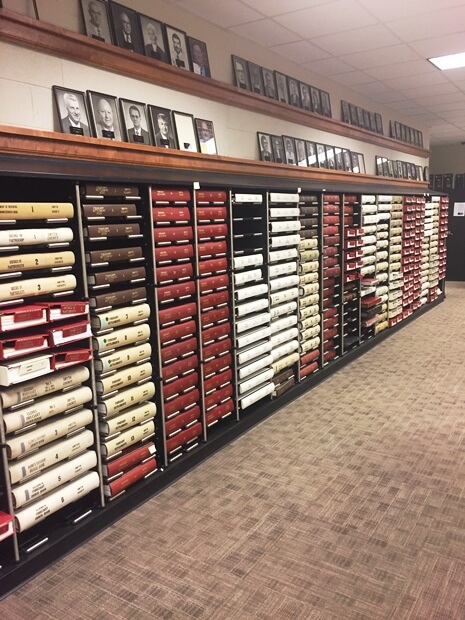
Smyth County, VA courthouse records (Image credit: Margaret Linford.)
But many of us live far away from where our ancestors owned land and lived out their lives. How can we access these records if we don’t have the time or budget to travel to the areas in question?
Thankfully, the digital revolution has made researching land records and other types of documents much easier, but often still time consuming and at times overwhelming.
The land records held at the state level for “state land” states (the original thirteen colonies and the states formed from them such as Maine and Kentucky) are usually indexed. They can often be accessed digitally at the website for the state archives, commercial genealogy sites such as Ancestry.com, or can be ordered via correspondence with the archive.
In states that were part of the old Northwest Territory, such as Ohio and Indiana, as well as the other public land states (any state formed under the Constitution that was not carved out of one of the original colonies), grants from the federal government to the first recorded owner of that land can be found at the Government Land Office site created by the Bureau of Land Management. Their website (available here) allows searches for names of individuals who purchased federal land in public land states. You can even view the digital images of the land grants, including the signature of the President of the United States at the time.

Example of a land patent image.
Other types of records associated with federal land, include:
- applications for public domain land grants,
- Homestead Act applications,
- Freedman’s Bureau land records,
- and bounty land warrants and applications for veterans.
These are all held at the National Archives in Washington, D.C. Many of these records also state relationships and add rich detail about the lives of ancestors. However, most of these records have never been digitized and must be searched in person or requested via the National Archives’ online order service.
(Editor’s note: Learn more about land records at the National Archives here.)
Land records at the county or town level are still held at the local county courthouse or archive, if they survive. Many jurisdictions have digitized their land records and made them available online, in many cases for free. This can sometimes include the entire run of a county’s land records, back to the formation of the county. County clerks and recorders will also sometimes do research via correspondence, though most are unable to do so due to time constraints.
Land Records at FamilySearch
Most importantly in the field of land records research from a genealogical perspective is the massive digitization project undertaken by FamilySearch, the website for the genealogical Society of Utah.
Millions of land records from all across the United States, and even some from other countries, are available at their website free of charge—and viewable either from the comfort of your own home or at a Family History Center or the Family History Library itself, depending on the license agreement FamilySearch has with the original repository.
This vast trove of land records is almost completely unindexed by FamilySearch and will thus not appear in results using their “Records” search page. They must instead be searched in the “Catalog” search page. (Editor’s note: learn how to search unindexed records at FamilySearch by reading our article: Browse-Only Databases at FamilySearch are Easy to Use.)
Despite not being indexed by FamilySearch, the digitized microfilms themselves usually have indexes, either in separate volumes or at the beginnings or ends of the digitized individual deed books.
Most of the digitized land records made available by FamilySearch date from 1900 or before, so a trip to the courthouse might still be warranted for most twentieth-century deeds and more recent land records research. If all else fails, don’t forget to ask the recorder or clerk for help if you have a limited research goal, such as one deed copy—you just might be surprised how eager and willing they are to help.
If the land records you need are unavailable online or are held in a remote location, consider hiring a professional genealogist to go to the courthouse in person on your behalf. Legacy Tree Genealogists has a worldwide network of onsite researchers who can obtain nearly any record that still exists in most areas. Learn more here about how we can assist you in the search for your ancestors and the records of their sometimes only tangible piece of the American dream—land!
(Editor’s note: Our links to Legacy Tree Genealogists are affiliate links and we’ll be compensated – at no cost to you – if you use it when you visit their website. This page includes a discount code for full service projects, or scroll to the bottom of the page for information about their 45-minute genealogy consultations. Thank you for helping to keep our articles and the Genealogy Gems Podcast free. )
Indeed, land ownership was more widespread in the Thirteen Colonies and the United States than most any other nation on earth. So the good news is that there’s a good chance that some of your ancestors were land owners. However you access them, land records are absolutely critical for success in genealogy and should be thoroughly examined whenever possible. You’ll be glad you did.
Jaye Drummond is a researcher for Legacy Tree Genealogists, a worldwide genealogy research firm with extensive expertise in breaking through genealogy brick walls. To learn more about Legacy Tree services and its research team, visit their website here.
Irish Historical Photographs in New and Updated Genealogical Records
We are bringing you Irish historical photographs from Dublin this month in celebration of Irish heritage. Search these amazing photos of your ancestral homeland. Also this week, directories from Scotland, church records of the United Kingdom, and censuses for Canada and New York State.
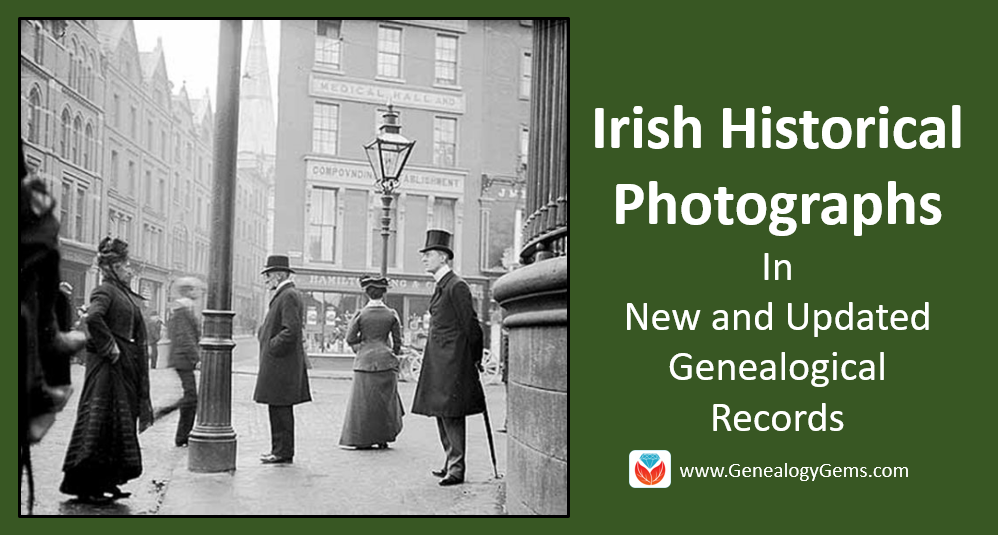
Ireland – Dublin – Irish Historical Photographs
These Irish historical photographs includes pictures of old documents and objects, too, with the oldest document dated to 1757!
Take a look at the entire archive, here.
More on Beginning Irish Genealogy
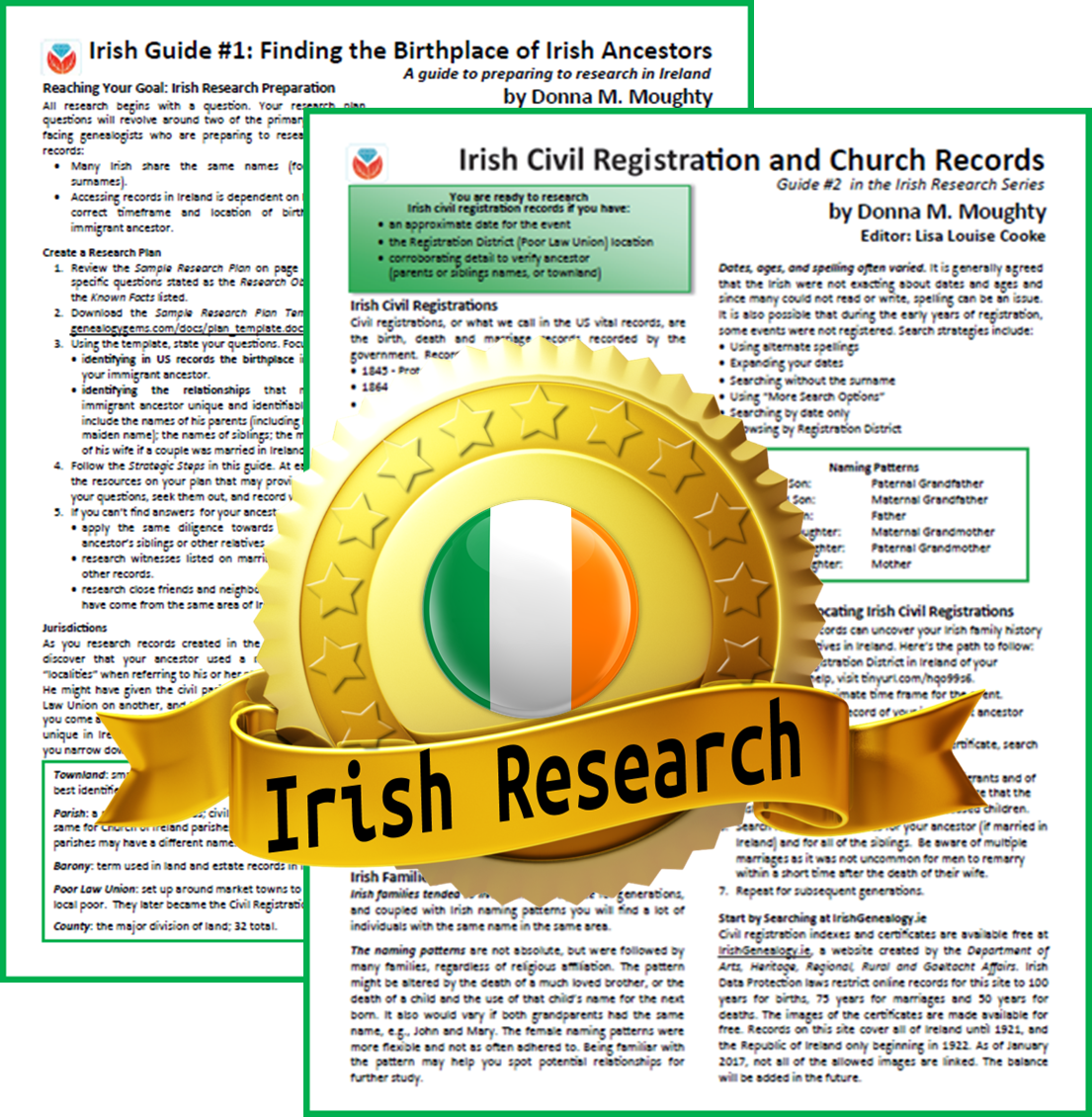 You’ll love these two quick-guides by Donna Moughty on Irish genealogy. Guide #1 titled Preparing for Success in Irish Records Research will help you determine a birth place, differentiate between persons with the same name, and walk you through identifying helpful US records.
You’ll love these two quick-guides by Donna Moughty on Irish genealogy. Guide #1 titled Preparing for Success in Irish Records Research will help you determine a birth place, differentiate between persons with the same name, and walk you through identifying helpful US records.
Guide #2 titled Irish Civil Registration and Church Records, will guide you through locating Protestant church records, civil registrations, and more. It will also walk you step-by-step through using the new online Civil Registration records.
And now, purchase these quick-guides as a bundle
Scotland – Post Office Directories
Scotland Post Office Directories contains over 382,000 records and allows you to explore thousands of pages of directories to learn more about the life and work of your Scottish ancestors. This Findmypast collection focuses on a particular town or district although a number of national postal directories are also included. The majority comprise a description of the place along with lists of people by occupation. For example, you will find lists of magistrates, councilors, sheriffs, police officers, and merchants.
The records are do not contain transcripts, but do include a digital image. The detail you will find on each page will depend on the type and date of the directory.
In conjunction with these post office directories, there are some that are browse-image only. They have not been indexed at this time. These 598 volumes of the Scotland Post Office Directories Image Browse are an excellent source for family history and those who need to trace their ancestors on a yearly basis.
Canada – 1842 Census

The Lower Canada Census 1842 at Findmypast contains over 46,000 records. The Province of Lower Canada was a British colony on the lower Saint Lawrence River and the shores of the Gulf of Saint Lawrence between 1791 and 1841. It covered the southern portion of the modern-day Province of Quebec and the Labrador region of the Province of Newfoundland and Labrador.
Each search result will include an image of the original document and a transcript. The original returns were printed in French and English and transcripts may include occupation, language, residence, and the number of inhabitants at their dwelling. Images can provide detailed information about the local area such as number of inhabited and uninhabited buildings, the number of barley mills, tanneries, distilleries, the price of wheat since last harvest, and the price of agricultural labor per day.
United Kingdom – London – Russian Orthodox Church Records
Findmypast has added records to their collection titled Britain, Russian Orthodox Church in London. Over 13,000 records taken from volumes of birth, marriage, and death records from the Russian Orthodox Church in London in exist is this collection. The records further include correspondences, congregational records, and church documents. The majority of the volumes are written in Russian although a limited number of English-language records are available.
The Russian Orthodox Church records are available as a browse set only at this time. You will need to search the records by the document description such as Births, marriages, deaths, converts, and passports, 1888-1919 or Donations to St Petersburg Guardianship for Poor Clergymen, 1863. Then, search within the digitized volume to find your ancestor.
You will find numerous correspondences with other church leaders in London, America, Russia, and Japan, as well as documents related to religious doctrine. The facts found in each volume will depend on the type of record you are viewing. Birth, marriage, and death records will typically include the individual’s name, event date, and place, while birth and marriage records may also include the names of the individual’s parents.
United Kingdom – War Records
New records have been added to the Findmypast collection of Anglo-Boer War Records 1899-1902. This unique database of more than 470 sources may reveal the unit your ancestor served with and any medals, honors, or awards they won. The register also contains a completely revised casualty list of 59,000 casualty records.
Each record contains a transcript and may include the following information:
- Name
- Service number and rank,
- Unit & regiment
- Medals, honors or awards received
- Memorials relating to death if applicable
United Kingdom – England – Births and Christenings
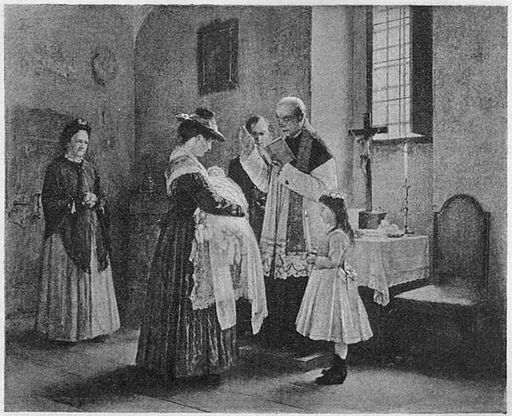
By Anton Laupheimer [Public domain], via Wikimedia Commons
United States – New York – State Census
FamilySearch has added to the New York State Census of 1865 this week. State censuses are particularly helpful to researchers because they fill in the gap between federal censuses. Unfortunately, the following counties are missing:
- Allegany
- Clinton
- Franklin
- Genesee
- Hamilton
- New York
- Putnam
- Queens
- Seneca
- St Lawrence
- Sullivan
- Westchester
- Wyoming
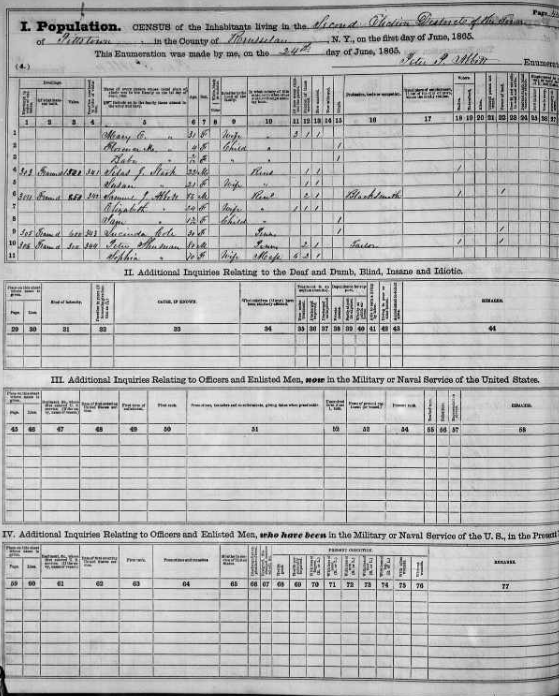 The population schedule includes the name, age, birthplace, and occupation of each household member as most censuses do.
The population schedule includes the name, age, birthplace, and occupation of each household member as most censuses do.
However, this census also includes two military schedules with information of officers and enlisted men currently in the military and men who had served in the military. This census contains information on when and where the individual first entered the military, rank, how long they were in the service, their present health, as well as several other items.
Additionally, the census contains tables on marriages and deaths occurring during the year ending June 1, 1865. These tables contain typical marriage and death information, but can be a helpful resource for those who have been unable to find these records in traditional locations.
Lastly, a second table entitled deaths of officers and enlisted men contains deaths of individuals which had occurred while in the military or naval service of the United States, or from wounds or disease acquired in said service since April, 1861, reported by the families to which the deceased belonged when at home. It includes the name of the deceased, age at death, if married or single, if a citizen, several items relating to military information, date of death, place of death, manner of death, survivors of the deceased, place of burial and any remarks.
Ellis Island Passenger Arrival Records: Relatives Now Searchable at MyHeritage
Millions of Ellis Island passenger arrival records include the names of the arrivals’ relatives, but those names haven’t been searchable in online indexes–until now. MyHeritage has added over 26.6 million relatives’ names to its passenger list collection and even digitally stitched together the pages for easier reading.

New Names in Ellis Island Passenger Arrival Records at MyHeritage.com
Recently, I interviewed Ellis Island experts and shared my ongoing immigrant ancestor discoveries in the free Genealogy Gems Podcast (episode 211) and Premium Podcast (episode 153). I’ve made progress by searching Ellis Island records at different websites and by learning about clues we often don’t recognize in the records themselves. So I was pleased to hear that MyHeritage has added its own Ellis Island and Other New York Passenger Lists (1820-1957) collection and given it two unique features:
- Its 94 million names include–for the very first time–26.6 million names of the relatives of passengers. Passenger lists recorded both the name of a relative or friend living at the arrival’s last residence and the name of a relative or friend the passenger was to visit in this country. Many times, this chain of names represents family links between an immigrant’s old and new homes. MyHeritage has indexed these names; their press release says they’re the first to do so. A quick check of Ellis Island collections at Ancestry.com, Ellis Island.org, Steve Morse’s One-Step Pages and FamilySearch confirms that none of them mention relatives’ names in their index descriptions.
- MyHeritage has stitched together the two-age passenger manifest images, which I find pretty cool. It’s much easier not to miss the fact that there is a second page for each record, and to trace your ancestor’s line straight across the page. Here’s what it looks like:
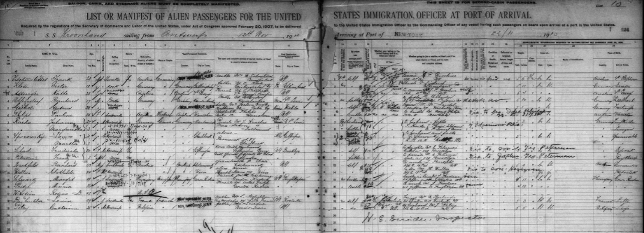
Searching for Ellis Island Immigrant Ancestors
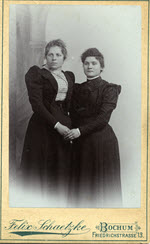
Louise (on the right) just before departure for America.
Interestingly, this search engine is the first one of any genealogy records site to pull up both sets of arrival listings for my great grandmother Louise Sporowsky and her daughter Martha, whom I talked about in Genealogy Gems Premium Podcast Episode #153.
I’m very fortunate that by a quirk of circumstance Louise and Martha were recorded twice in the same passenger list. But because each entry had variations, they’ve never come up in the same search – that is until now!
The search was a simple one: the name “Sporowksy” & 1910 as the year of arrival:
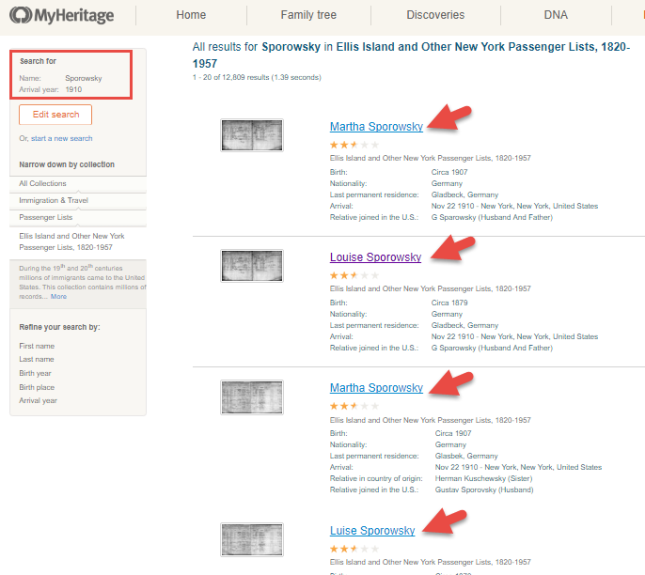
Premium Members may listen to that episode to find out why Louise and Martha had two passenger listings for the same crossing and what I learned from looking at both of them.
Here’s a tip: There isn’t a separate search field for relatives’ names in the MyHeritage index. I wondered about that, and Daniel Horowitz at MyHeritage confirms that you just use the regular search fields for first and last names of the passenger’s relatives. Results will include both the passengers themselves and the relatives they named.
Learn More about Ellis Island
Listen to the free Genealogy Gems Podcast episode #211: Barry Moreno, Historian at Ellis Island, talks about the life cycle of this busy U.S. immigration station (1892-1954) and his research into the lives of Ellis Island employees.
Disclosure: This article contains affiliate links and Genealogy Gems will be compensated if you make a purchase after clicking on these links (at no additional cost to you). Thank you for supporting Genealogy Gems!

